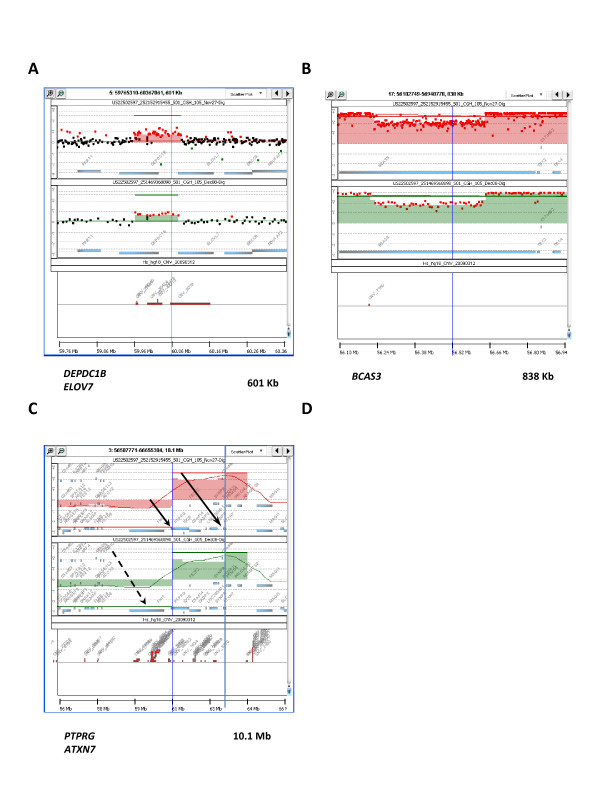Figure 3.
Three intra-genic "breaks" detected with ultra-dense array CGH analysis, mapping to known gene fusions in the MCF-7 genome. Each panel shows data points and moving averages for log2 ratios of fluorescence between labeled MCF-7 DNA and the differentially labeled normal human reference obtained with 1 M platform (top, shown in red) or 244 K platform (middle, shown in green). Aberrations are identified and the presence of common CNVs is indicated with red boxes (bottom). (A) Amplification affecting DEPDC1B and ELOVL7 genes. Note that the amplification starts within the DEPDC1B gene and ends within the ELOVL7 gene, corresponding to an intrachromosomal translocation involving the N-terminus of DEPDC1B gene and the C-terminus of the ELOVL7 gene [28]. (B) A view of large amplified segment centered around a "relative" DNA copy number loss within the BCAS3 (Breast Carcinoma Amplified Sequence 3) gene, corresponding to a gene fusion event involving exons 6-24 or the middle part of the BCAS3 gene [28]. (C) Two genes, PTPRG and ATXN7 (indicated by solid arrows) involved in two different gene fusion events in MCF-7 cells [28] and flanking large amplified segments of chromosome 3 (shaded area) adjacent to the FRA3B fragile site, which contains the FHIT gene (broken arrow).

